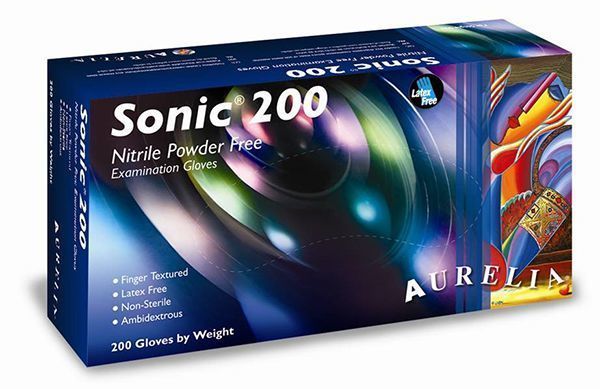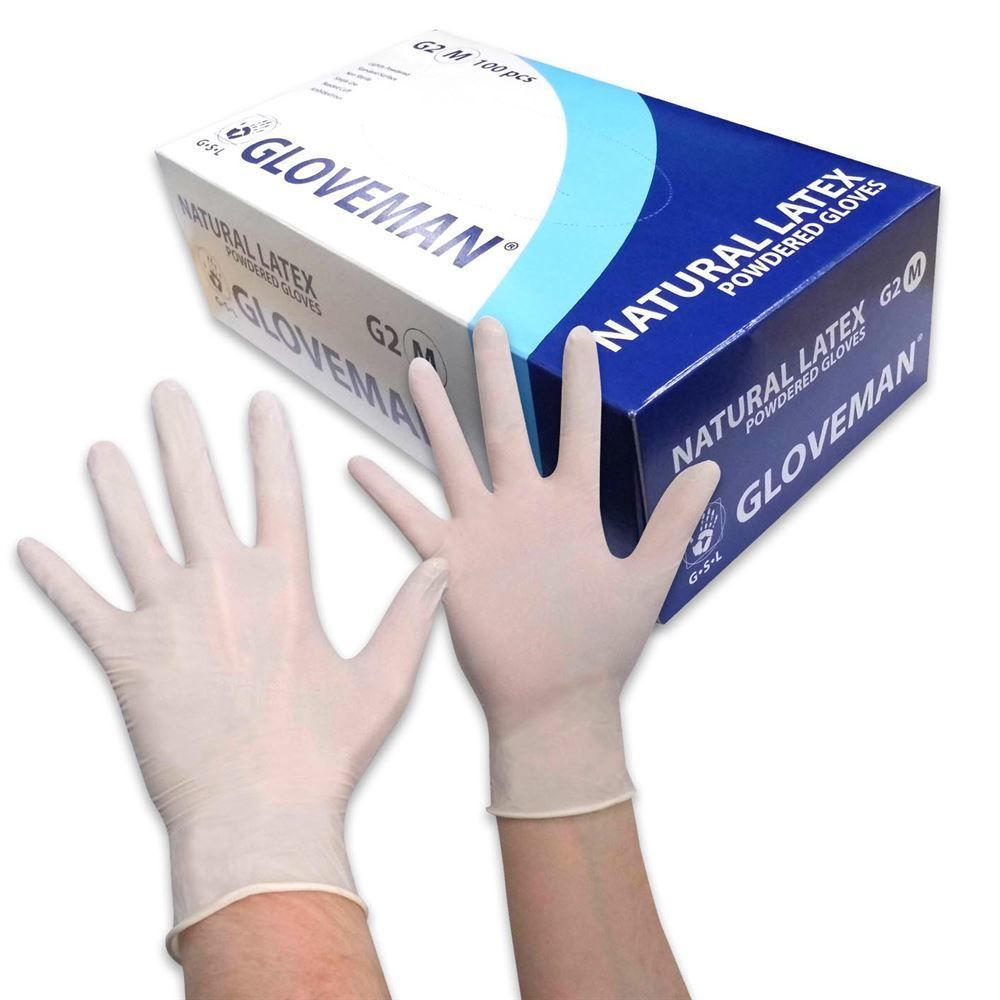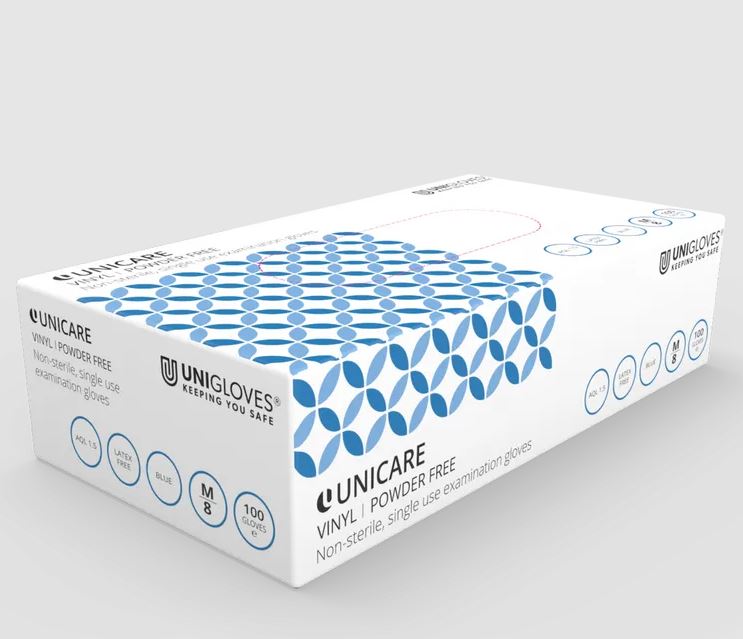Our ultimate guide to disposable gloves will help you identify the different types of gloves available, their uses and which ones to choose. Disposable gloves are used in a wide variety of working environments from medical and clinical settings to garages and tattoo parlours. Each type of glove is suitable for different applications and there are many things to consider before you buy.
Disposable gloves offer protection for the hands against hazardous substances, chemicals, bodily fluids, sharp objects and more. They are used in medical environments and prevent direct contact as well as cross contamination between patients and staff. They can be worn to prevent contact with chemicals when cleaning tasks are being carried out and help prevent contamination when handling food. Disposable gloves are put through rigorous testing and have to be compliant with safety and quality standards which offers peace of mind to the wearer.
The main types of disposable gloves are Latex, Vinyl and Nitrile. Each has its own benefits and is best suited to certain applications. You should choose the gloves that are best suited to the intended tasks and there are 12 important factors to consider when choosing disposable gloves.
Material Latex Nitrile Vinyl Tensile Strength ★★★ ★★★ ★☆☆ Flexibility and Dexterity ★★★ ★★☆ ★★☆ Contamination Risk ★★★ ★★★ ★★☆ Durability ★★★ ★★★ ★☆☆ Puncture Resistance ★★☆ ★★★ ★☆☆ Comfort ★★★ ★★☆ ★★★ Food Safe ★★★ ★★★ ★★★ Sensitivity ★★★ ★★☆ ★★☆ Oil, Chemical and Solvent Resistance ★★☆ ★★★ ★★☆ Biodegradable ★★☆ ★☆☆ ★☆☆ Protein Content ★☆☆ ★★★ ★★★ Affordability ★★☆ ★★☆ ★★★
Key:
★☆☆ - Not Recommended
★★☆ - Good
★★★ - Excellent
Nitrile disposable gloves are a common choice. They offer excellent strength and high performance levels and are ideal for those who suffer from Latex allergies. They are suitable for a wide range of applications and are particularly useful for oily environments and mechanical and industrial applications. View our Nitrile Glove range here.

Latex is the preferred choice for many working in the industrial, medical and food industries. They provide great comfort and dexterity and latex gloves are biodegradable making them an environmentally friendly choice. Unfortunately, not everyone can use them though because some people are allergic to latex. Our range of Latex gloves can be found here.

Vinyl gloves are affordable and provide protection against contamination. They are best suited for shorter tasks, particularly in the food handling, beauty and hair care industries. Browse our selection of Vinyl gloves here.

Powdered gloves contain cornstarch and it’s main purpose is to make the gloves easier to put on, particularly after hand washing. The powder also helps to keep hands comfortable during use and prevents perspiration. The downside is that the presence of powder can be irritating for some, causing contact dermatitis. Handwashing after removing gloves is crucial in this instance.
Manufacturers are reducing the amount of powder used in gloves and many are now lightly powdered or powder free. Powder free gloves should only be used when hands are completely dry to avoid difficulties. Powder free gloves often go through a chlorination process that helps to make them less form fitting, eliminating the need for powder to don them. However, powder free gloves can be more difficult to remove quickly and may decrease the effectiveness of the grip.
Once you have decided on the type of glove you need, you will need to make sure you choose correctly sized gloves. Wearing ill fitting gloves will increase your chances of injury or contamination. If the gloves you wear are too big, your dexterity and grip will be compromised, which could result in an accident or injury. Gloves that are too small are at risk of tearing or puncturing and will limit your flexibility. You can measure the width of your palm to find out what size you require.
Most gloves have a size guide similar to this, enabling you to work out the size you require:
It is always worth considering the safety standards of disposable gloves before you make a purchase. The key information to look out for is the EU and US standards which specify the safety of the gloves across a range of applications. The AQL (Acceptable Quality Level) refers to an internationally recognised standard that measures for pinhole defects. The lower the AQL the higher the level of protection. Most gloves in the UK have AQL numbers of between 1.5 and 4.0, however there are gloves available with an AQL as low as 0.65 and these are particularly suited to high risk tasks.
The key European standards are as follows:
It is so important to choose the right disposable gloves, it really can make a difference to how you work. Take into account the glove performance, which glove is best suited for the tasks intended and which ones offer the best fit. This guide should help you decide which gloves to choose, and whether it’s latex, vinyl or nitrile gloves you will find an extensive range available here at SHD Medical.
Sources:
https://uk.rs-online.com/web/generalDisplay.html?id=ideas-and-advice/disposable-gloves-guide#FAQs
https://www.gompels.co.uk/free-resources/buyers-guide-to-disposable-gloves-helping-you-make-the-right-choices.html
https://www.safetygloves.co.uk/blog/disposable-gloves-a-material-guide.html